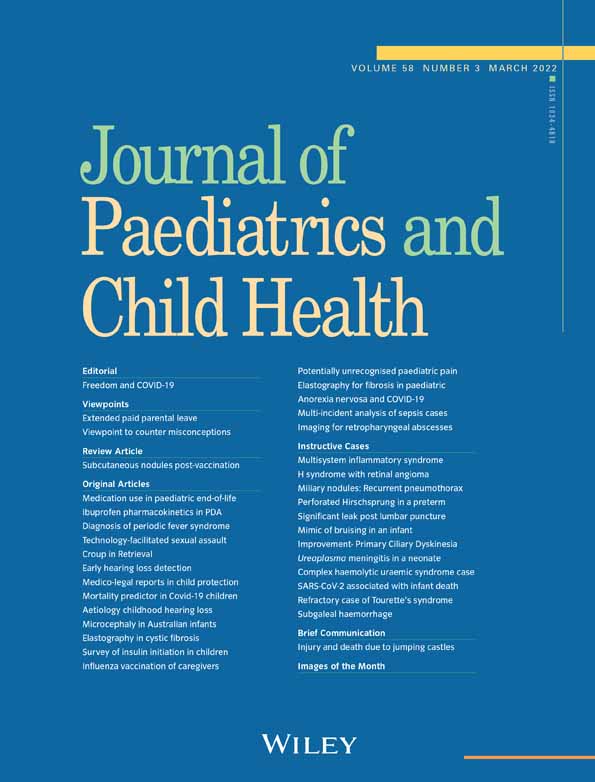Potentially unrecognised pain in children: Population-based birth cohort study at 7 years of age
Conflict of interest: None declared.
Abstract
Aim
To estimate agreement in the point prevalence of any pain, high-intensity pain and pain in two or more sites according to parental and child report.
Methods
We conducted a prospective study of 5639 children from a Portuguese birth cohort – Generation XXI, where parents and 7-year-old children answered the same questions at the same time. We assessed the accuracy of parental report, considering children's self-report as the gold standard.
Results
At 7 years of age, 499 children (8.8% (95% confidence interval (CI) 8.1–9.6)) reported having pain at the time of the interview. Of those, 44.1% had high-intensity pain (3.9% (95% CI 3.4–4.4) of the whole sample) and 12.4% reported pain in two or more sites (1.1% (95% CI 0.8–1.4) of the whole sample). In this community setting, pain prevalence and intensity were lower when collected from parents. Parental report had sensitivity below 20% and specificity above 95% but its positive predictive value was at most 25%.
Conclusion
Our findings support that, outside acute care, parents have a specific but not sensitive report of children's pain at the age of 7 years. Their report seemed useful to exclude major complaints but limited to screen children's pain. This limitation was higher for more severe pain, that is two or more sites or high-intensity pain. Children should be asked directly about pain to avoid under-estimating paediatric pain.




